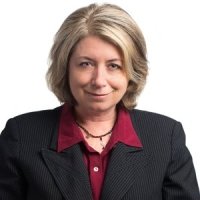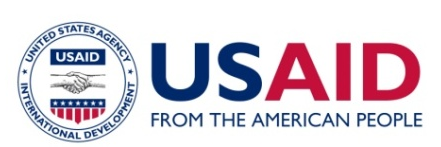Opportunity and Risk: Mining and the Green Energy Transition
Submit a question
Is a “green resource curse” on its way? Kimberly Thompson, a Senior Advisor for Natural Resources and Conflict and the Industry Lead for Mining at the U.S. Agency for International Development (USAID), says that the current status quo in the green mining industry risks “inadvertently creating the conditions” for it to happen.
Thompson spoke at a panel discussion hosted by the Wilson Center on the challenges that the United States will face as it seeks to develop a national strategy for securing green minerals in an environmentally, economically, and socially responsible way. A projected increase in mineral demand could influence markets, supply chains, and geopolitical competition, shaping the future of global peace and security.
Representative Kathy Castor, Chair of the Select Committee on the Climate Crisis in the U.S. House of Representatives, said that the nation is already gearing up to meet those challenges. As part of the Biden Administration’s renewed whole-of-government approach to tackling the climate crisis, she observed, 700 recommendations have been made to Congress on the issue, and about 200 of those have been enacted into law.
Risks of the broader extractive industry persist
Thompson highlighted USAID’s growing concern that the green energy transition could reproduce the risks found in the broader extractive sector. This widely-recognized phenomenon of a “resource curse” includes a broad array of challenges: mining governance, conflict and human rights abuses, labor and working conditions, land tenure and property rights, the environment, and sharing of development benefits between the local and national levels.
Josee Blandine-Ongotto, Project Manager of Combatting Child Labor in the Democratic Republic of the Congo’s Cobalt Industry (COTECCO) at the International Labor Organization said that poor governance and social and economic underdevelopment, in particular, are underlying structural reasons for such risks. She observed that cobalt mining in the Democratic Republic of the Congo (DRC) is not formalized, and its governance is thus characterized by “high corruption and lack of transparency and accountability.”
The DRC faces other key challenges. For instance, despite the risks associated with artisanal and small-scale mining (ASM), parents and children continue to depend on it for their livelihoods. Blandine-Ongotto said that families are pushed into the industry by a combination of unemployment, lack of social programs and protection for children, and increased living costs in mining towns. In these circumstances, ASM becomes their most viable option.
Considering smaller producers and junior exploration companies operating in many other countries, Thompson warns that what is happening in the DRC might be a “canary in the coal mine” if such risks are not addressed. This potential early sign of what is to come for the green mining industry worldwide is especially relevant for minerals such as lithium, graphite, and cobalt. That is because under the 2℃ climate scenario—where the world adopts green technologies to ensure a 50 percent chance of global temperatures staying below 2℃ by 2100—these minerals are projected to see an almost 500 percent increase in global demand by 2050.
Centering Community in Development
Addressing these risks does not simply mean a focus on preventing a resource curse. Jewellord Nem Singh, an Assistant Professor in International Development at the International Institute of Social Studies, stated that governments and other stakeholders should work towards a “domestically-driven process” of social and economic development.
For example, in the DRC’s case, Blandine-Ongotto proposed that the government should “formalize the ASM sector through social dialogue mechanisms, establish poverty reduction programs, and ensure strict application of a revised mining code.” In this event, the growth of the green mining industry might create opportunities to establish strong laws and policies to ensure that underlying structural problems are addressed.
Blandine-Ongotto observed that mining companies also have an important role to play in investing in local community development. Companies both upstream and downstream of the supply chain have a responsibility to ensure due diligence and remediation of human rights. They also must operate in accordance with international best practices, national laws, and policies designed to protect workers’ rights.
The mechanisms to make this happen are already being built. For example, Alyssa Newman, the Program Manager for Responsible Materials & Inclusive Sourcing at Google, says that her company has been working closely with the Responsible Minerals Initiative, USAID, and the State Department as part of its work to ensure responsible and resilient supply chains. Using digital traceability technology and an open-source blockchain platform, Google has traced over 600 tons of tin from Peru, the DRC, and Rwanda, in an effort to improve the transparency of its own supply chain.
This global energy transition also presents a crucial opportunity to confront larger questions of climate justice and historic responsibility. The world’s growing need for green energy minerals disproportionately affects developing countries, observed Nem Singh, but there is still “no clear recognition of the historic responsibility around climate change and carbon emissions…. Any discussion on climate justice will be really difficult unless we start to recognize and talk about compensatory policies with developing countries.”
Gillian Caldwell, Chief Climate Officer and Deputy Assistant Administrator for the Center for Environment, Energy, and Infrastructure at USAID, concurred: Western countries have a responsibility to “pursue development and development assistance in ways that are fair and equitable.”
China’s Outsized Influence
Given its dominance in the supply chain, China’s role in the global green mining industry received particular attention from the panelists. China’s ascendancy is especially evident on the processing side. Data from the International Energy Agency show that China accounts for almost 90 percent of the processing for rare earths, more than 60 percent for cobalt, and almost 60% for lithium.
Nem Singh added that China is also “equally a consuming country of resources.” Indeed, its abundance of natural resources places it in the unique position of allowing some of its mineral wealth to be reserved for its own domestic industrialization and national security objectives.
China’s actions, therefore, exert what Nem Singh believed to be a “very tangible influence” over a range of countries in Southeast Asia, Africa, and Latin America. China has been building a relationship with these resource-rich countries and offering them an alternative “China model” of development. This model of re-industrialization is characterized by a shift away from market mechanisms, including high levels of state intervention and presence of state enterprises. On one level, it may appeal to resource-rich countries more than partnerships with the United States and the European Union. Yet the “China model” is less capable of tackling supply chain risks such as unsafe labor conditions or unsustainable business practices.
China’s centrality in the green mining industry makes it a very important stakeholder in concerns relating to sustainability and social justice—not just for its own operations, but also along the entire global supply chain. Caldwell explained that unless all governments, and especially prominent actors like China, cooperate to tackle these labor and environmental issues, these issues will remain problematic. After all, there will always be buyers for these products regardless of the conditions under which they were made, which makes efforts to uphold higher labor and environmental standards—and ensure that development is pursued in a fair and equitable manner—more challenging.
The urgency of the global energy transition’s goal to keep global warming to 2℃ means that the significance of these potential trade-offs cannot be understated. Yet the panelists agreed that with the proper planning and institutional innovation seen in nations such as Peru and Brazil, mining communities can benefit economically and socially from green mining—and even avoid the “green resource curse.” Meanwhile, consuming countries like the United States also might enjoy a more reliable and secure supply chain for their own energy transition needs.
Written by Yiran Ning, edited by Richard Byrne.
Continue the conversation on Twitter @NewSecurityBeat. Find related coverage of these issues on our blog, NewSecurityBeat.org.
Introduction

Keynote Speakers
Moderator

Founder and President, Ecospherics
Panelists
Hosted By

Environmental Change and Security Program
The Environmental Change and Security Program (ECSP) explores the connections between environmental change, health, and population dynamics and their links to conflict, human insecurity, and foreign policy. Read more


Africa Program
The Africa Program works to address the most critical issues facing Africa and US-Africa relations, build mutually beneficial US-Africa relations, and enhance knowledge and understanding about Africa in the United States. The Program achieves its mission through in-depth research and analyses, public discussion, working groups, and briefings that bring together policymakers, practitioners, and subject matter experts to analyze and offer practical options for tackling key challenges in Africa and in US-Africa relations. Read more


Indo-Pacific Program
The Indo-Pacific Program promotes policy debate and intellectual discussions on US interests in the Asia-Pacific as well as political, economic, security, and social issues relating to the world’s most populous and economically dynamic region. Read more


Canada Institute
The mission of the Wilson Center's Canada Institute is to raise the level of knowledge of Canada in the United States, particularly within the Washington, DC policy community. Research projects, initiatives, podcasts, and publications cover contemporary Canada, US-Canadian relations, North American political economy, and Canada's global role as it intersects with US national interests. Read more


Congressional Relations
The Wilson Center’s office of Congressional Relations works to maintain a vibrant relationship with Members of Congress and their staffs. We organize and run a series of educational programs led by Wilson Center experts, ranging from seminars to private briefings, with the purpose of increasing congressional staffers’ knowledge of foreign policy. We also coordinate outreach to Capitol Hill, including testimonies by Wilson Center scholars and briefings specifically for Members of Congress. Read more


Latin America Program
The Wilson Center’s prestigious Latin America Program provides non-partisan expertise to a broad community of decision makers in the United States and Latin America on critical policy issues facing the Hemisphere. The Program provides insightful and actionable research for policymakers, private sector leaders, journalists, and public intellectuals in the United States and Latin America. To bridge the gap between scholarship and policy action, it fosters new inquiry, sponsors high-level public and private meetings among multiple stakeholders, and explores policy options to improve outcomes for citizens throughout the Americas. Drawing on the Wilson Center’s strength as the nation’s key non-partisan policy forum, the Program serves as a trusted source of analysis and a vital point of contact between the worlds of scholarship and action. Read more


Mexico Institute
The Mexico Institute seeks to improve understanding, communication, and cooperation between Mexico and the United States by promoting original research, encouraging public discussion, and proposing policy options for enhancing the bilateral relationship. A binational Advisory Board, chaired by Luis Téllez and Earl Anthony Wayne, oversees the work of the Mexico Institute. Read more


Polar Institute
Since its inception in 2017, the Polar Institute has become a premier forum for discussion and policy analysis of Arctic and Antarctic issues, and is known in Washington, DC and elsewhere as the Arctic Public Square. The Institute holistically studies the central policy issues facing these regions—with an emphasis on Arctic governance, climate change, economic development, scientific research, security, and Indigenous communities—and communicates trusted analysis to policymakers and other stakeholders. Read more

